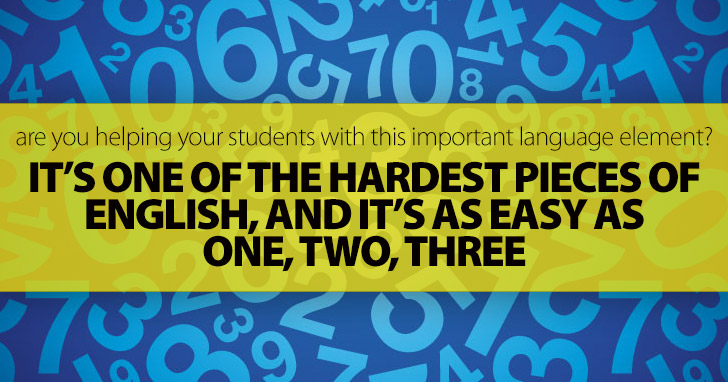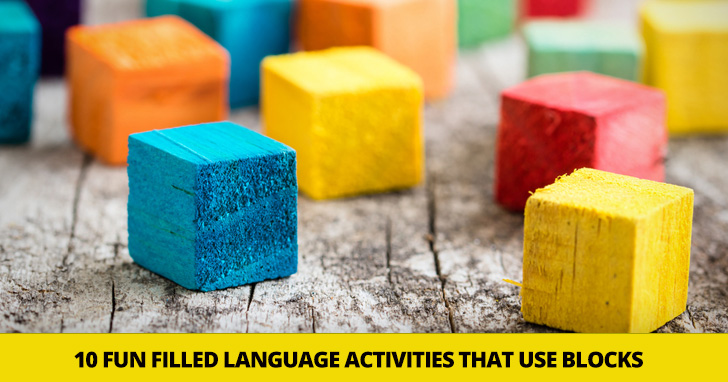Itís One of the Hardest Pieces of English, and Itís As Easy As One, Two, Three: Are You Helping Your Students with This Important Language Element?


Do you want something different to use with your ESL students? Maybe it’s time you brought a set of building blocks to class. Though they may not be the most common prop for teaching English, they should be a lot more common than they are. You can do so many activities with building blocks, from simple beginner activities to more advanced challenges for your higher level students. If you aren’t sure how to go about incorporating blocks into your language lessons, here are ten ideas you can use today.
One of the simplest activities you can do with building blocks is to stack them and then count the number of blocks in your tower. Though it may seem overly simple, counting can be one of the most difficult skills a second language learner uses. Numbers are so abstract, most people naturally revert to their first language when counting – in their heads or aloud. Give your students practice with English numbers with this simple activity. Want to make it more challenging for them? Ask them to simply tell you how many blocks are in each creation without counting them out loud.
Your students will have fun comparing things in your classroom, and I’m not talking about the grades they earn. Using comparative and superlative adjectives is a skill every English student needs to learn. The pattern of adding –er when comparing two or more objects and –est when comparing all objects isn’t one that comes without practice. Have two students each choose a block from your growing collections and compare them to each other. They can makes simple observations like, “My block is bigger than your block.” Or they can make more complex observations like, “The angle on this corner of my block is more acute than that angle on yours.”
How good are your students at following directions? Test them with this fun and easy activity. Have students work either alone or with a partner. Before class, come up with some designs that can be built using the blocks you have in class. Then take one of your designs and tell your students how to build it. For example, you might say, “Take two rectangular blocks and stand them up on their ends, side to side. Then put a large triangular block on top of them.” This structure would look like a simple house, but your instructions can be as complex as you would like using up to as many blocks as you have on hand. After you finish giving your directions, see how well your students listened by checking their finished design against your plans. You can also give students written directions for the building project if you want to test their reading comprehension skills.
If you want to get a little more movement into your typical classroom activities, try labeling four blocks from a to d. Then give your students some multiple choice questions and ask them to choose the block with the right answer written on it. But that may be too simple for your students. If so, divide your class into two teams. Have one person from each team come up front and give them a question. Students must race to grab the block with the right answer. Award a point for every right answer and see which team comes out on top at the end of the game.
For a fun twist on a jigsaw activity, try this one. Divide your text into short sections, and tape each section on a block. (You will need one each reading selection block for every group of students who do the activity.) Then turn the blocks over and label them a to d or however many sections you have. Put students in groups. One at a time, group members will go to the table where the blocks are, read their selection, and turn the block back over. They then have to go back to their group and relay the information they read. No other group member is allowed to read that section of the text. Once all of the portions of the reading have been read and retold to the group, give each person a reading comprehension quiz to see how well they understood the information their teammates shared.
You can use the same type of blocks from the last activity in this similar activity. Give each group of five students a set of five blocks that have one article or story divided up and taped on the back. Give each student a block to read. They are not allowed to read anyone else’s selection. After students have read their blocks, the group must work together in teams to put the selections in the correct order without turning them back over.
This activity does double duty as it gives students practice asking for things politely at the same time they get practice using demonstrative adjectives in English: this, that, these, and those. Give each pair of students some blocks to work with. One person will build something using all of their blocks, but they cannot take any blocks from the desk themselves. They must ask their partner for the correct blocks using demonstrative adjectives and do it politely. After that person has completed their projects, students switch roles.
This is a simple speaking activity that is done in pairs. Have two students each build something using a few blocks. After they are finished, they should discuss the similarities and differences between the structures that they built.
How well can your students describe things they cannot see? You’ll know after this simple activity. On a table, place one of each type of block in your set. Then put one block in a brown paper bag without letting your students see which one it is. One person reaches their hand in the bag and then describes the block to the class. The other students must guess which type of block the student is describing and choose the matching block from the table. After the students have finished their description and guesses, have the student pull the block out of the bag and let the rest of the class see if their guesses were correct.
Learning and reviewing prepositions of location is one of the easiest activities you can do with the blocks in your classroom, and your student will appreciate this hands on activity. Give each student two or three blocks, and then give them descriptions on how to arrange the blocks in relation to each other using preposition of location. You will easily be able to see who understands which prepositions by how their blocks are arranged.
If you don’t want to spend a lot of money getting blocks for your classroom, you don’t have to. Add wooden blocks on your list of supplies you give parents and encourage them to donate any they are getting rid of. You can also check thrift stores, resale shops, end of year clearance sales, and garage sales in your area. Before you know it, you’ll be building bridges to fluency in English.